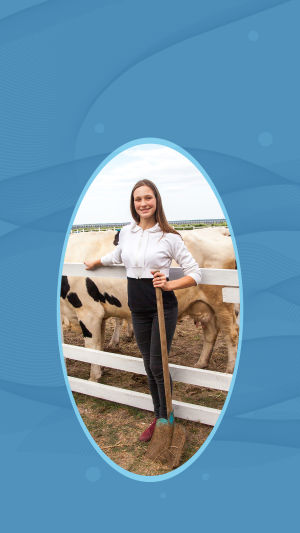As one of the main sources of protein in people's daily life, milk can supplement a certain amount of nutrition for the human body, so the breeding of dairy cows is very important, and high-quality dairy cows can produce better quality milk. There are a few mistakes to avoid when raising dairy cows:1. When feeding dairy cows, the ratio of concentrated feed and supplementary feed is unreasonable. Therefore, when feeding dairy cows, farmers should choose better concentrated feed and supplementary feed for dairy cows sold by regular feed manufacturers, or choose premixed feed or concentrated feed specially for dairy cows, and prepare them according to their recommended formula.
2. What is the green fodder and roughage to feed? This method is wrong. The correct method is to "green with dryness, dryness with greens, and greens with dryness" throughout the year, and provide cows with a certain amount of tubers and roots. It can not only improve the palatability of the diet, but also meet the nutritional needs of dairy cows for milk production.3. The ratio of concentrated feed and roughage is inaccurate. It is necessary to know that dairy cows are herbivores, and grass is the basic feed for dairy cows. Therefore, in the process of feeding, the ratio of concentrate and roughage for dairy cows is required to be 5:5.
4. The feeding method is backward, mainly manifested in: one is to feed a part of roughage first, and then feed the concentrate and water together; the other is to mix the concentrate, roughage and water together. Both of these two methods shorten the feeding time of the cows and reduce the saliva entering the rumen; the third is to feed the roughage too much, which will cause the feed to ferment rapidly in the rumen. Milk is not at normal levels. The correct feeding method is: determine the feeding amount of concentrate and roughage according to the milk production and other conditions, stir evenly during feeding, and provide drinking water after feeding; It is better to be moist and not dusty, drink water after feeding, and try to ensure that the cows can eat grass, ruminate and rest for 7-8 hours every day.Dairy cows produce about 30 kg of milk a day, which is an average value. Different cows may have different yields, different breeds, and different regions.
The nutritional composition of milk is not as simple as everyone thinks. Analysis shows that it contains at least hundreds of chemical components, including protein, fat, carbohydrates, vitamins, minerals and water. There is no shortage of six major nutrients.
Protein: The content of milk is about 3.1%, and the digestion and absorption rate is as high as 98%. It contains all eight essential amino acids needed by the human body, which can provide the energy required by the human body, promote the growth of the body and muscle tissue, and ensure the function of the human immune system. normal performance;Fat: The content is about 3.6%, which is much lower than that of pork, mutton and poultry, and is easily absorbed by the human body, and its cholesterol content is also significantly lower than that of meat and eggs;
Carbohydrates: The carbohydrates present in milk are mainly lactose. Lactose is a unique sugar in mammalian milk, with a content of 4.6%. It can provide heat for the human body and help the absorption of minerals such as calcium and iron. It can promote the growth of lactic acid bacteria in the intestinal tract and maintain intestinal health;
Calcium: The average content is 1000 mg/kg, which is far more than ordinary other foods. It is one of the best sources of calcium in the diet, and the calcium in milk is organic calcium, which is easily absorbed by the human body. Calcium contributes to the development and growth of bones and teeth
Vitamins: Milk contains almost all the known vitamins needed by the human body, including fat-soluble vitamins such as beta-carotene and vitamin D, and water-soluble vitamins such as B vitamins, vitamin C, and niacin.





